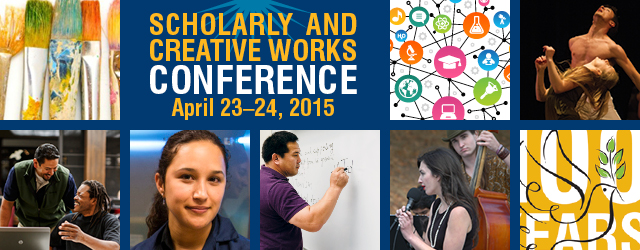
Poster Presentations - Guzman Lecture Hall
Improving Mood Through Art: The Benefits of Street Art
Location
Guzman Lecture Hall Poster #18
Start Date
4-23-2015 6:30 PM
End Date
4-23-2015 7:30 PM
Student Type
Undergraduate
Faculty Mentor(s)
Afshin Gharib, Ph.D.
Presentation Format
Poster Presentation
Abstract/Description
Studies claim that art viewing has a positive effect on many psychological variables. This study aims to verify that public art improves the mood of viewers. Gussak (2004) did research on prison inmates to determine the effect of art therapy on their compliance with rules, compliance with correctional staff, socializing with peers, optimistic attitude towards medications, compliance with diet, and regular sleeping patterns. After a two week session, there was less violence reported and more overall compliance. Participants psychologically benefitted through art therapy. Bowen, Greene, & Kisida (2014) showed the benefits of art on a larger scale. A sample of 3,811 K-12 students won a lottery to participate in a museum visit. The control group did not win the lottery. Museum guides brought students through the museum with student-lead discussions. After the visit, both groups evaluated an image not present at the museum: Bo Bartlett’s The Box. Essay responses were counted based on the of number of critical thinking skills measured through seven critical thinking categories. Students who visited the museum were more likely to use critical thinking skills. Amongst students eligible for food stamps, critical thinking increased by 18%. The present study will test about 60 participants recruited from classes in a small liberal arts university. Using SurveyMonkey, participants will be divided into three groups. All members of the study will be asked demographic information and questions about their art-making and art-viewing experience, then given the following measures: Internal State Scale (ISS) and Critical Anxiety Scale (CAS) before and after viewing a set of images. Group 1 will see positive street art images (bright in color and cheerful content), Group 2 will see graffiti images or images with a negative connotation (catharsis-related art or political art) and Group 3 will serve as a control by viewing images of blank walls. Finally, a Problem-Solving Inventory (PSI) will be administered to determine the relationship between PSI scores and the amount of exposure to art. It is predicted that viewing public art will decrease anxiety and improve overall mood, and exposure to art in general will improve problem-solving skills.
Improving Mood Through Art: The Benefits of Street Art
Guzman Lecture Hall Poster #18
Studies claim that art viewing has a positive effect on many psychological variables. This study aims to verify that public art improves the mood of viewers. Gussak (2004) did research on prison inmates to determine the effect of art therapy on their compliance with rules, compliance with correctional staff, socializing with peers, optimistic attitude towards medications, compliance with diet, and regular sleeping patterns. After a two week session, there was less violence reported and more overall compliance. Participants psychologically benefitted through art therapy. Bowen, Greene, & Kisida (2014) showed the benefits of art on a larger scale. A sample of 3,811 K-12 students won a lottery to participate in a museum visit. The control group did not win the lottery. Museum guides brought students through the museum with student-lead discussions. After the visit, both groups evaluated an image not present at the museum: Bo Bartlett’s The Box. Essay responses were counted based on the of number of critical thinking skills measured through seven critical thinking categories. Students who visited the museum were more likely to use critical thinking skills. Amongst students eligible for food stamps, critical thinking increased by 18%. The present study will test about 60 participants recruited from classes in a small liberal arts university. Using SurveyMonkey, participants will be divided into three groups. All members of the study will be asked demographic information and questions about their art-making and art-viewing experience, then given the following measures: Internal State Scale (ISS) and Critical Anxiety Scale (CAS) before and after viewing a set of images. Group 1 will see positive street art images (bright in color and cheerful content), Group 2 will see graffiti images or images with a negative connotation (catharsis-related art or political art) and Group 3 will serve as a control by viewing images of blank walls. Finally, a Problem-Solving Inventory (PSI) will be administered to determine the relationship between PSI scores and the amount of exposure to art. It is predicted that viewing public art will decrease anxiety and improve overall mood, and exposure to art in general will improve problem-solving skills.

